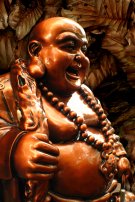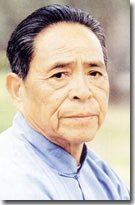Meditation in Chen taijiquan
Taijiquan has been called “meditation in movement”. But what is the role of meditation in the taijiquan form? Clearly practising the form well requires a great deal of concentration. In particular, in internal arts generally the mind leads the movement of the body in part by becoming aware of the subtle sensations coursing through the body as it moves. Repeatedly practising the form in a state of complete mental absorption in following the basic principles of taijiquan is clearly a form of meditation.

But what is this kind of meditation on the body? One similar and well documented practice is the practice of jhana in Buddhism. It became available in China about two thousand years ago and likely maps closely onto already existing cultivation practices in China. The early jhana suttas (or dhyana sutras), written shortly after the Buddha’s death, speak about awareness of sensations in the body. In a state of awareness of those sensations, thoughts quieten down. The meditator is instructed to saturate their body with those sensations. It is the first of eight jhana methods that is used to prepare the mind for insight into the four noble truths of Buddhism.1

Qigong meditation is also largely based on sensations within the body. In qigong practices, such as the microcosmic orbit, the meditator uses their mind to guide sensations of qi around their body. In Yang Yang’s excellent book on taijiquan, he talks about his teacher’s instructions to him about sitting and lying-down meditation and being told he should do it regularly if he wanted to improve his taijiquan. Yang Yang says that he didn’t recognise the full importance of what his teacher was saying until much later.2 Feng Zhiqiang, his teacher, was a leading student of Chen Fake and a student of the qigong master Hu Yaozhen. Feng was famous for the high level of his internal cultivation, including the control of a “qi ball” that he could move through his body to the point of contact of his opponent in push hands.
These considerations suggest that seated (and lying down) meditation, standing post and the taijiquan forms all exist in a continuum of practice both historically and in terms of what everyday practice might or should look like.
Leigh Brasington, Right Concentration: A Practical Guide to the Jhanas, Shambala, 2015. ↩
Yang Yang, Taijiquan: The Art of Nurturing, the Science of Power, Zhenwu Publications, 2005, p. 86. ↩